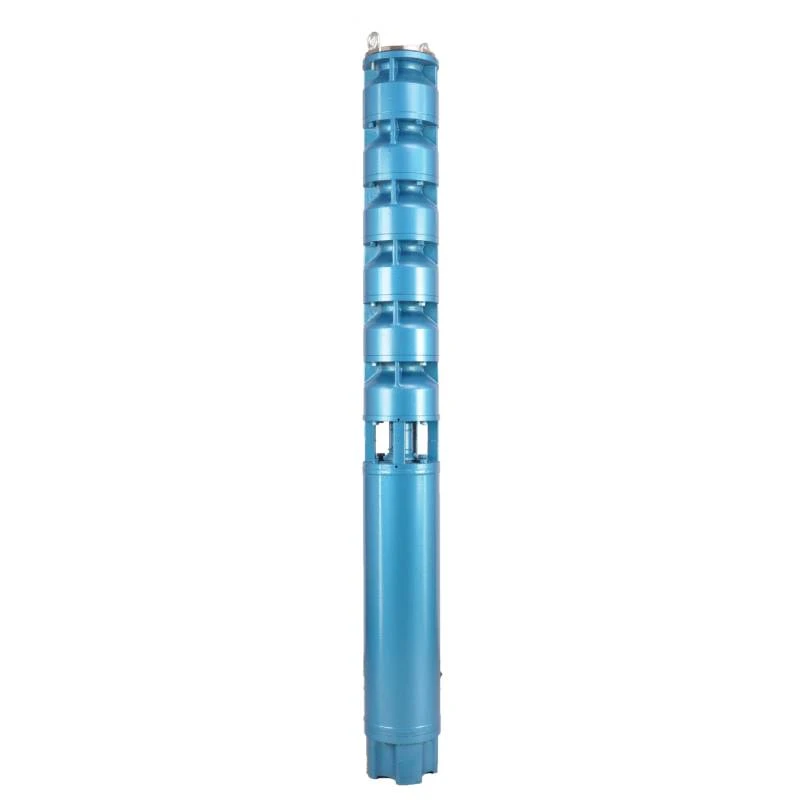Nov . 12, 2024 18:48 Back to list
deep water submersible pump
Deep Water Submersible Pumps An Overview
Deep water submersible pumps are essential equipment used in various applications that require the movement of fluids from significant depths. These sophisticated devices are designed to operate underwater, making them invaluable for industries such as wastewater management, mining, and oil extraction.
Working Principle
The operation of a deep water submersible pump is based on a simple hydraulic principle. When submerged, the pump's motor powers an impeller, which rotates at high speeds to create a vacuum at the intake. This vacuum allows water or another liquid to be drawn into the pump and pushed upward through a discharge pipe to the surface. The entire pumping mechanism is encased within a waterproof structure, usually made of corrosion-resistant materials, ensuring reliability and durability even in challenging environments.
Design Features
One of the critical design features of deep water submersible pumps is their ability to handle high pressure. As these pumps are deployed at considerable depths, they must withstand the immense water pressure surrounding them. Manufacturers often utilize robust materials such as stainless steel and thermoplastics to construct the pump housing and components, which not only protects against corrosion but also increases longevity.
Additionally, deep water submersible pumps come equipped with advanced sealing technology to prevent water ingress, ensuring that the motor and electrical components remain dry and operational. Many models also incorporate thermal overload protection, which automatically shuts the pump down in case of overheating due to excessive wear or blockages.
Applications
Deep water submersible pumps find use across several sectors
deep water submersible pump

1. Wastewater Management These pumps are integral to municipal water systems, where they transport wastewater from collection points to treatment facilities. Their ability to handle solid particulates makes them suitable for this application.
2. Mining In mining operations, deep water submersible pumps are vital for dewatering. They efficiently remove water that enters mines, keeping working areas dry and safe for extraction activities.
3. Oil and Gas Extraction In offshore oil drilling, submersible pumps are used to lift crude oil from wells located under the sea. These pumps can handle the high viscosity and varying temperatures of crude oil, ensuring a steady flow to processing facilities.
4. Irrigation and Agriculture Farmers use deep water submersible pumps to extract groundwater for irrigation. These pumps facilitate the efficient distribution of water to crops, enhancing agricultural productivity.
Advantages
The advantages of deep water submersible pumps are numerous. Firstly, their ability to operate submerged means they consume less energy compared to traditional vertical pumps, which require additional energy to lift water from depth. Secondly, the compact design of these pumps allows for easy installation in limited spaces. They are also known for their reliability and low maintenance needs, making them an economical choice in the long run.
Conclusion
In conclusion, deep water submersible pumps play a crucial role in various industries, providing efficient fluid movement from deep water sources. Their robust design, ability to operate under high pressure, and diverse applications make them indispensable in modern engineering and environmental management. As technology advances, these pumps continue to evolve, incorporating better materials and more energy-efficient designs, further enhancing their performance and reliability in demanding environments. Whether in municipal services, mining operations, or agricultural practices, deep water submersible pumps are key players in ensuring the effective management of resources from beneath the surface.
-
Submersible Water Pump: The Efficient 'Power Pioneer' of the Underwater World
NewsJul.01,2025
-
Submersible Pond Pump: The Hidden Guardian of Water Landscape Ecology
NewsJul.01,2025
-
Stainless Well Pump: A Reliable and Durable Pumping Main Force
NewsJul.01,2025
-
Stainless Steel Submersible Pump: An Efficient and Versatile Tool for Underwater Operations
NewsJul.01,2025
-
Deep Well Submersible Pump: An Efficient 'Sucker' of Groundwater Sources
NewsJul.01,2025
-
Deep Water Well Pump: An Efficient 'Sucker' of Groundwater Sources
NewsJul.01,2025
-
 Submersible Water Pump: The Efficient 'Power Pioneer' of the Underwater WorldIn the field of hydraulic equipment, the Submersible Water Pump has become the core equipment for underwater operations and water resource transportation due to its unique design and excellent performance.Detail
Submersible Water Pump: The Efficient 'Power Pioneer' of the Underwater WorldIn the field of hydraulic equipment, the Submersible Water Pump has become the core equipment for underwater operations and water resource transportation due to its unique design and excellent performance.Detail -
 Submersible Pond Pump: The Hidden Guardian of Water Landscape EcologyIn courtyard landscapes, ecological ponds, and even small-scale water conservancy projects, there is a silent yet indispensable equipment - the Submersible Pond Pump.Detail
Submersible Pond Pump: The Hidden Guardian of Water Landscape EcologyIn courtyard landscapes, ecological ponds, and even small-scale water conservancy projects, there is a silent yet indispensable equipment - the Submersible Pond Pump.Detail -
 Stainless Well Pump: A Reliable and Durable Pumping Main ForceIn the field of water resource transportation, Stainless Well Pump has become the core equipment for various pumping scenarios with its excellent performance and reliable quality.Detail
Stainless Well Pump: A Reliable and Durable Pumping Main ForceIn the field of water resource transportation, Stainless Well Pump has become the core equipment for various pumping scenarios with its excellent performance and reliable quality.Detail
